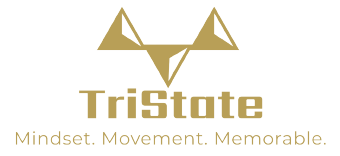Velocity-Based Training: Should You Use It?
A couple of years ago, I started digging into velocity-based training (VBT). I’d read Will Fleming’s work on how it could apply to Olympic weightlifting, and it got me thinking about the constant balancing act between RPE and percentage-based work—especially for athletes like me juggling life, work, age, and training.
What started as a curiosity turned into a tool I now use with myself and with my athletes—especially when the goal isn’t just numbers, but readiness and recovery. For me, it’s added structure and insight. For athletes I coach in person, it’s become a smart way to train with purpose, not just chase PRs.
Core Insight or Concept
Velocity-based training isn’t just about high-tech data—it’s about intent. When done right, it gives athletes real-time feedback on bar speed, helps coaches manage fatigue, and replaces guesswork with a measurable goal: move fast today. That alone can transform a squat session.
But it’s not for everyone, and it’s not magic. Like any tool, it’s most effective when you know why and how to use it.
Breakdown (How It Works, When to Use It, Real-Life Perspective)
Where I Started: From Curiosity to Application
I got introduced to VBT through a combination of reading and mentorship. I began testing it on myself during squat sessions with Coach Sean Rigsby. I’m a busy, older athlete—my training capacity shifts daily. VBT gave us an easy way to assess how I was actually moving.
We weren’t chasing numbers anymore. We were chasing speed. And that alone changed my mindset.
How I Use It Today
For myself: to manage fatigue and set expectations for the session
For athletes in person: mostly in squatting blocks using the FlexStrong system
In combo with force plates: to track readiness, especially with our higher-level lifters
What I love about it:
Gives athletes something to chase (speed instead of load)
Helps reframe a “bad” day as simply a “not fast” day
Provides objective cutoffs (e.g. this number isn’t in the cards today)
“It’s not about whether you hit a number—it’s about whether you’re moving like you’re ready to.”
Biggest Benefit: Shift the Goal, Keep the Intent
When I use VBT in squats, the goal is clear: move at a target speed.
If you hit the speed, great—we’re in range.
If you don’t, we adjust volume, intensity, or expectations. It creates real-time auto-regulation without losing direction.
Biggest Drawback: Speed Over Form
One thing I’ve had to watch for—especially with younger or less experienced lifters—is sacrificing position just to move faster.
If an athlete chases speed before learning good mechanics, it can backfire. That’s why I only introduce VBT when I know the athlete moves well under load.
Who Should (and Shouldn’t) Use It?
Beginners – Not recommended. They need to learn mechanics first.
Intermediate athletes – Ideal. Their mechanics are clean enough to benefit from speed feedback.
Advanced lifters – Excellent tool for peaking, managing fatigue, and controlling tempo.
How to Start Using It as a Coach or Athlete
If you’re thinking of trying it:
Pick one lift (squats are best to start)
Use a tool like FlexStrong or any velocity sensor with live readouts
Compare speed to known percentages
VBT isn’t the future—it’s a tool. And if you’re a coach or athlete who wants to take more control over recovery, readiness, and fatigue management, it might be the missing piece.
Don’t overcomplicate it. Start simple. Start with speed. Let the feedback teach you.
Have you ever tracked your bar speed? Want to see how your squats line up with your percentages?
Start with one lift next week. Choose a speed. Chase it. And let me know what you find.

